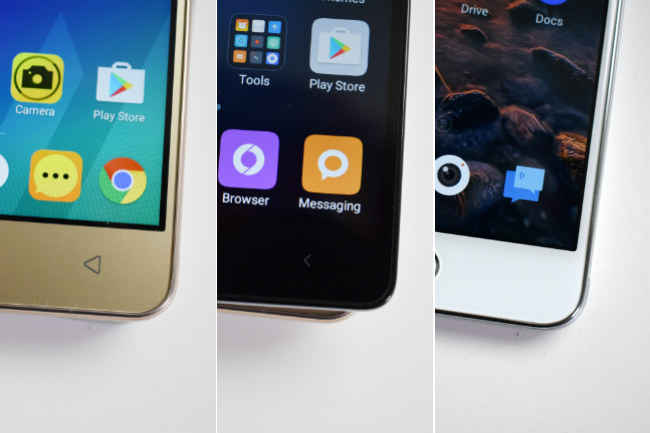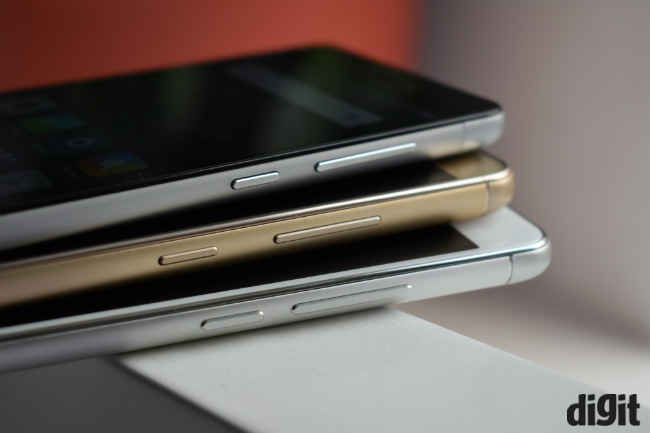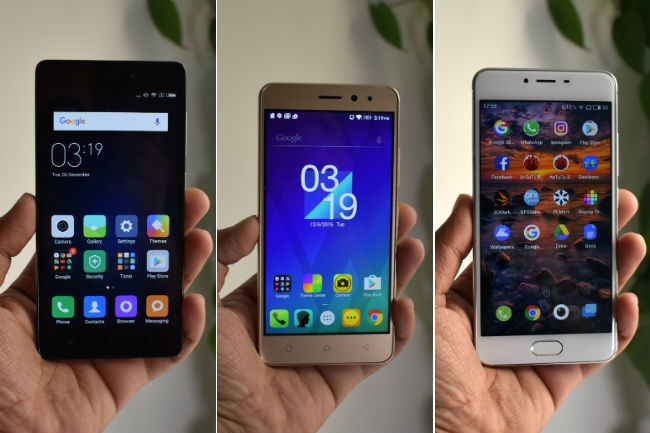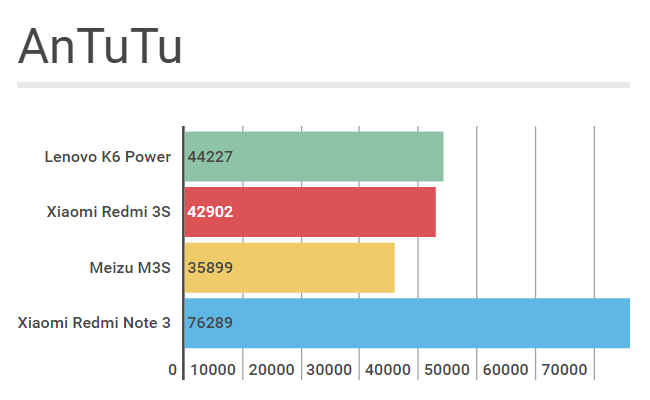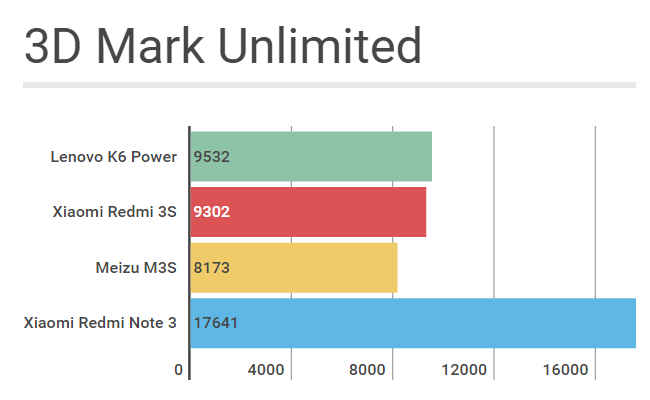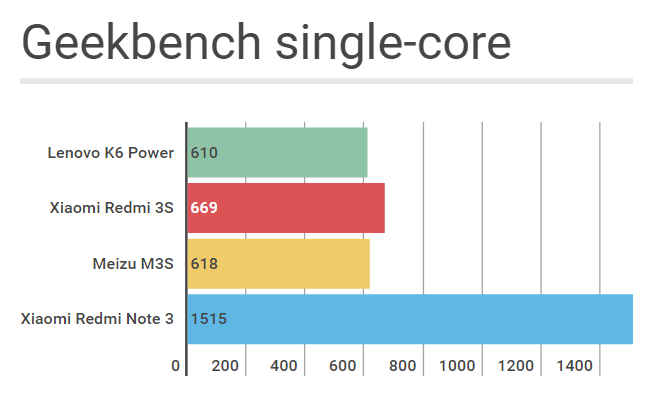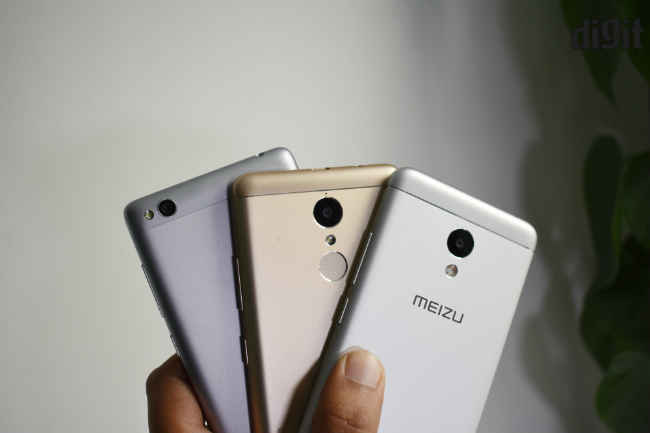Budget phones compared: Lenovo K6 Power v. Xiaomi Redmi 3s Prime v. Meizu M3s
The Lenovo K6 Power has all the potential to replace the Xiaomi Redmi 3s Prime as the best sub-10k smartphone. We find out how it fares, here.
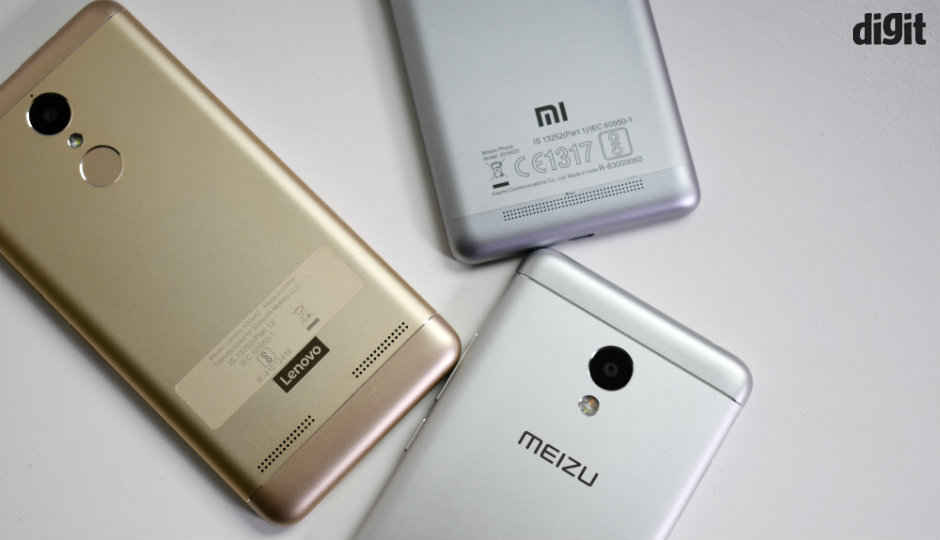
The Lenovo K6 Power has been with us for almost a week now, and so far, seems to be a really good device. Incidentally, we have been getting a lot of questions about how it compares with other sub-10K phones, and to find out, we pit it against the best devices in the budget segment. In this comparison, the Lenovo K6 Power is up against the Meizu M3S and the Xiaomi Redmi 3S Prime. Let’s find out how it fares.
 Survey
SurveyDisplay and Design
All three phones in this comparison have a small, 5-inch display, and are similarly built. However, things change beyond that, as the Xiaomi Redmi 3S Prime and the Meizu M3S feature a 720p display, while the Lenovo K6 Power offers a 1080p display. This means that the Lenovo K6 Power offers almost double the pixel density as the other two. However, this doesn't mean that the display is significantly better in any way, and colour saturation and contrast ratios appear of better balance on the Redmi 3S Prime. The display of the Redmi 3S Prime is also a little warmer compared to the other two devices, which makes it look better.
Aesthetically, all three phones are pretty much the same, weighing around 140 grams. All have metal rear panels, rounded edges, and slight chamfers on the power and volume buttons. Overall, all three phones feel equally ergonomic and easy to use in one hand. While the Lenovo K6 Power technically has the edge here, the Xiaomi Redmi 3s Prime’s display delivers the better balance of colours, taking the cake here.
User Interface
This is where things start to differ, as three devices have their own take on how Android should look. While the Lenovo K6 Power and the Xiaomi Redmi 3S Prime runs on Android Marshmallow, the Meizu M3S is still stuck on Android Lollipop 5.1.1.
Out of three, we like the look of Lenovo’s new Vibe UI, which comes only with the bare essential applications. It combines the colourful themes of the older Vibe UI interface with the simplicity of Android Marshmallow. Hence, unlike the other two phones in this comparison, the K6 Power has an app drawer and a simple Settings menu. In addition, Lenovo has added UI features such as app locks using fingerprint sensor, and a theme store.
Xioami’s MiUI and Meizu’s Flyme UI are completely different, as MiUI has tons of customisations, whereas Flyme UI remains plain and simple. Both UIs are easy to navigate through, and all the essential apps are custom-made and pre-installed. Some people may like either of the two instead of the new Vibe UI, but that is subjective.
In terms of our preference, however, the Lenovo K6 Power gets the favourable verdict, and makes for an overall neater device to use. It is also important to note that the K6 Power has a lighter UI than the Redmi 3s Prime, which contributes on overall usability.
Performance
On paper, the Lenovo K6 Power has similar specifications as the Xiaomi Redmi 3s Prime, featuring the same Qualcomm Snapdragon 430. However, the phone performs slightly better than the Redmi 3S Prime in synthetic benchmarks. That being said, the day-to-day performance of the two devices is very similar. Using the phone as a daily driver, we didn't find any noticeable difference between the two.
As for the Meizu M3S, it lags behind the two devices by a considerable margin in synthetic benchmarks. The day to day performance of the phone is still respectable, but we did find the phone stutter and lag from time to time, the nature of which you would not find on the other two phones..
Audio quality on the Lenovo K6 Power is definitely better via both the stereo speakers at the back or the headphone jack. So, if you are looking for a device with good audio quality, this is worth considering. That considered, the Lenovo K6 Power edges ahead of the curve, but only by a slim margin.
Battery life
The biggest attribute of the K6 Power is its battery life, which at 4000mAh is slightly smaller than the 4100mAh battery on the Redmi 3S Prime. However, the phone does have a 1080p display that eats into the battery’s life. While we are still reviewing the device and may find changes in terms of final battery output, initial tests suggest that it is as good as the battery on the Redmi 3S Prime.
Camera
On the camera front, the Lenovo K6 Power continues its lead and offers better overall camera quality over the Xiaomi Redmi 3S Prime and the Meizu M3S. While all three phones have 13MP rear image sensors, the colour reproduction comes out to be better on the K6 Power. The Xiaomi Redmi 3S Prime comes a close second as it is unable to cope with the noise as well as the K6 Power, when shooting in low light. Out of the three, the Meizu M3S fades in comparison with inferior camera quality, which as standalone is just about average. Images shot lack details, and look undersaturated at times.
Conclusion
Overall, the Lenovo K6 Power happens to be the better device out of the three. The phones have similar designs and builds, but the K6 Power nudges ahead of the rest in terms of camera quality, and overall performance, interface and battery life. From our initial comparisons, the Lenovo K6 Power seems all set to take over the throne of the best sub-10k smartphone available today.
Buy Redmi 3s prime from Flipkart at Rs 8999.
Buy Lenovo K6 Power from Flipkart at Rs 9999.
Buy Meizu M3s from Flipkart at Rs 8999.
Hardik Singh
Light at the top, this odd looking creature lives under the heavy medication of video games. View Full Profile
